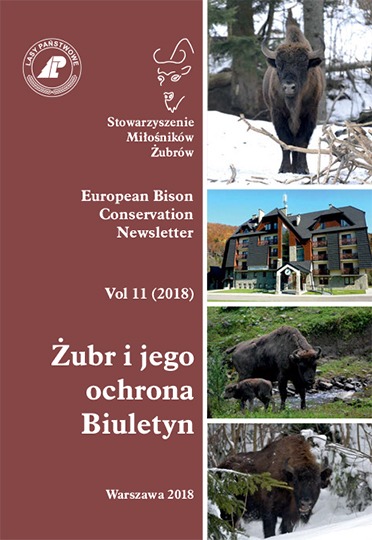Wisents in the Stuposiany Forest District
Keywords:
Stuposiany Forest District, wisent, reintroduction, genetic enrichmentAbstract
In the area of the Stuposiany Forest District the Widełki forestry, an acclimatization enclosure was built, to which in October 1963 the first wisents arrived. The purpose of creating a herd in Bieszczady was the need to transfer all European bison of Lowland-Caucasian line from breeding centers to the south of Poland. There was no concern about the proper sex ratio or age structure. In total 19 wisents, including only 8 females, were brought to the enclosure in the years 1963–1966. From the very beginning, foresters took care of wisents herd and the proof of the quality of their efforts is growing size of the population in Bieszczady – actualy counting about 500 individuals. A herd in the Stupposiany Forest District was named the “Upper San” because it wandered along the upper run of this river. The size of this herd was about 30 individuals. In 2010, tuberculosis was diagnosed in a dead cow, then in all consecutively eliminated animals. There was no other possibility to protect the rest of the Bieszczady population, so it was decided to liquidate the Górny San herd, and at the beginning of 2013 there were no more wisents in the area. After a few years of quarantine the small group was released there and now wisents penetrate the same parts of San valley. In addition, an enclosure was built in Muczne, serving both education and actions directed towards the genetic enrichment of the Bieszczady population. The paper describes the history of the “Upper San” and “Upper San II” herds.
Downloads
Published
How to Cite
License
Copyright (c) 2018 Jan Mazur

This work is licensed under a Creative Commons Attribution 4.0 International License.





